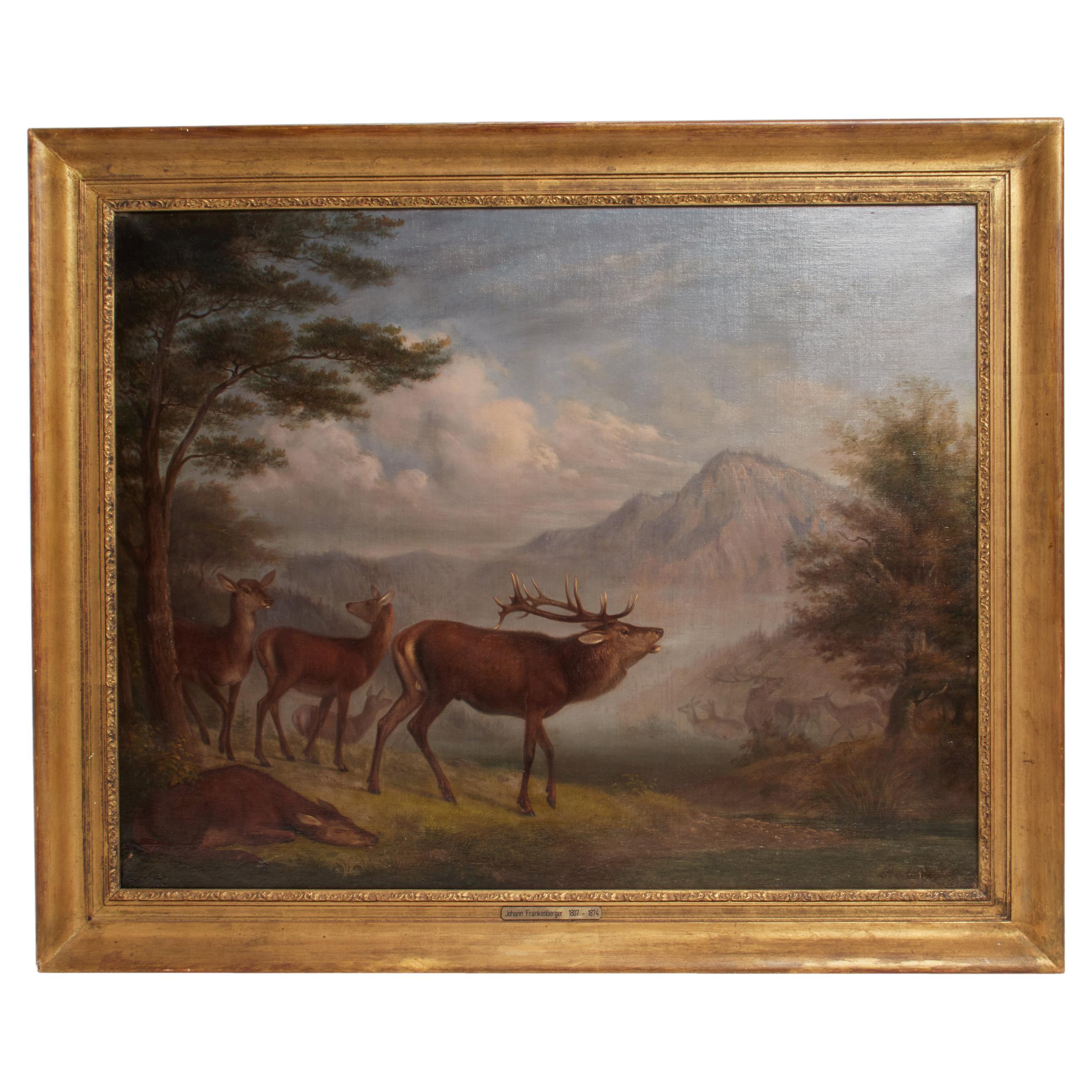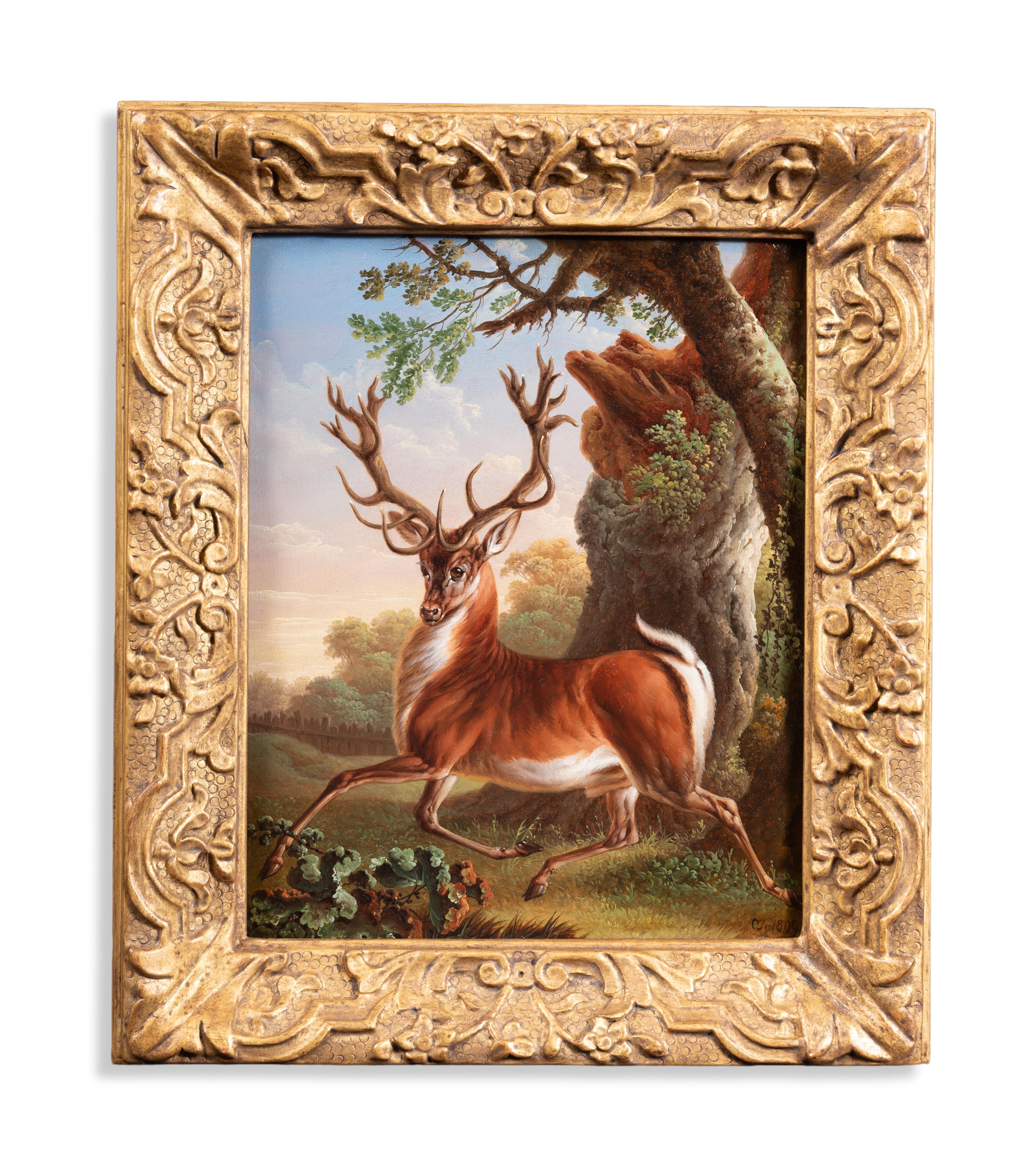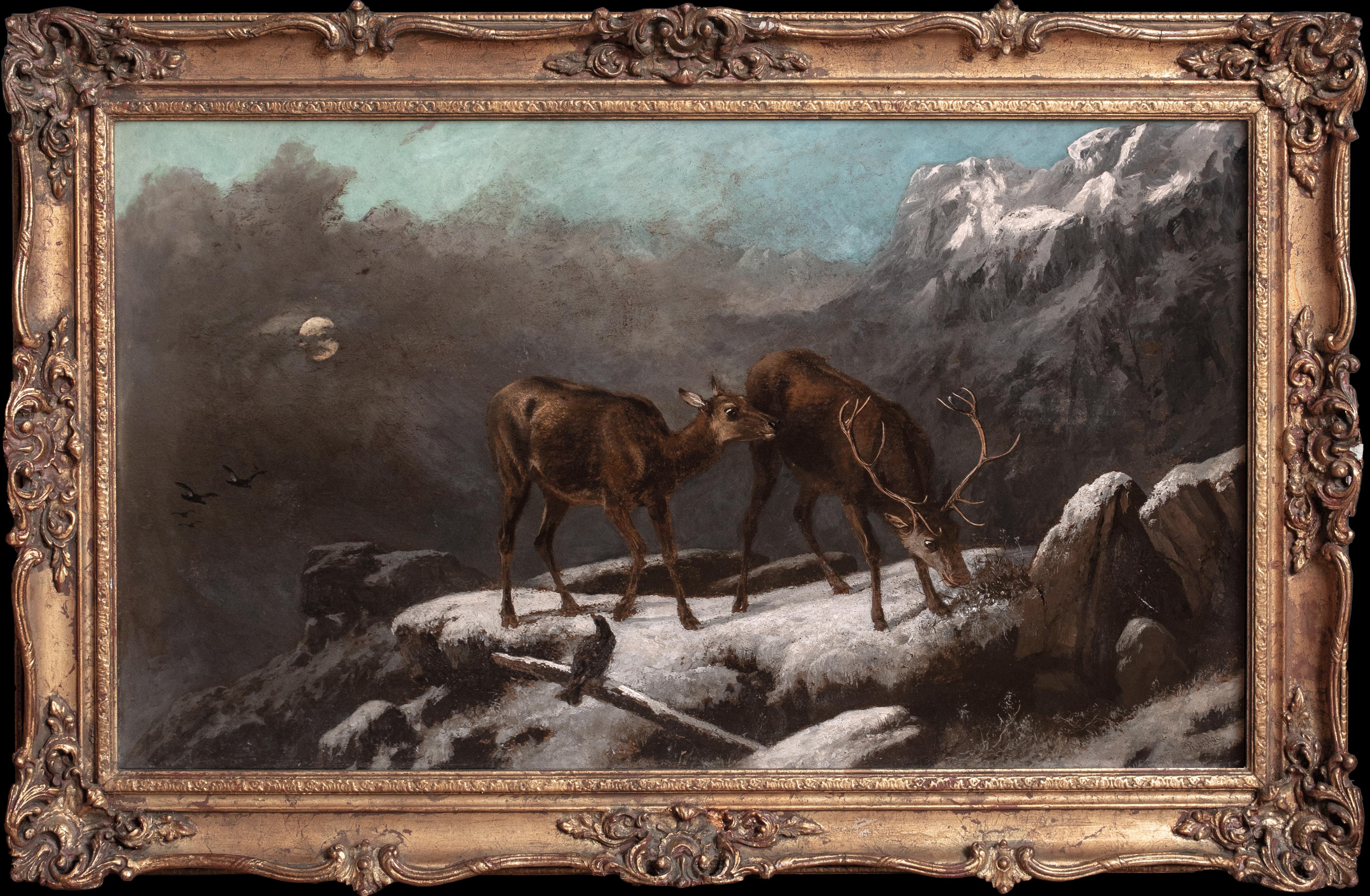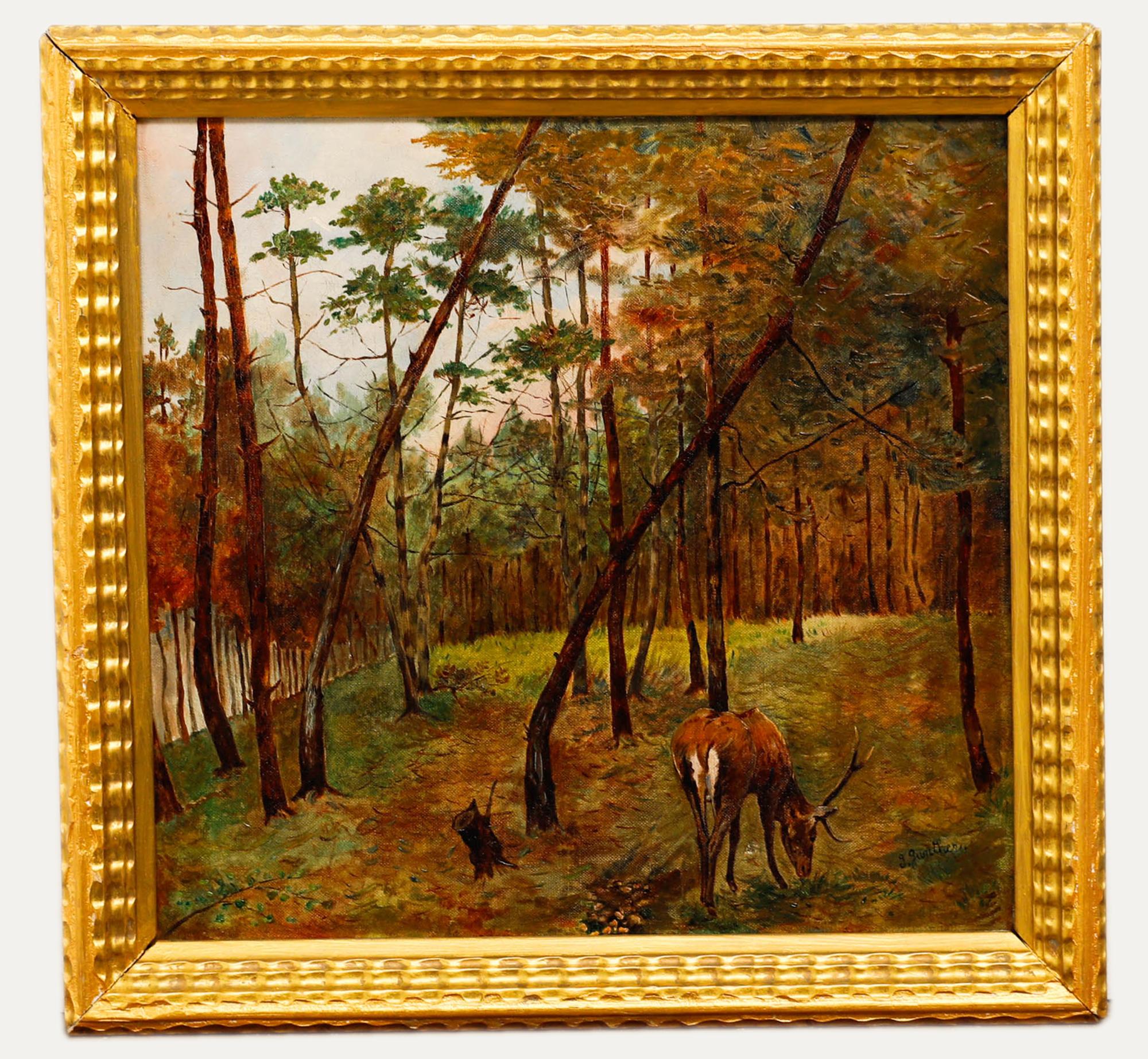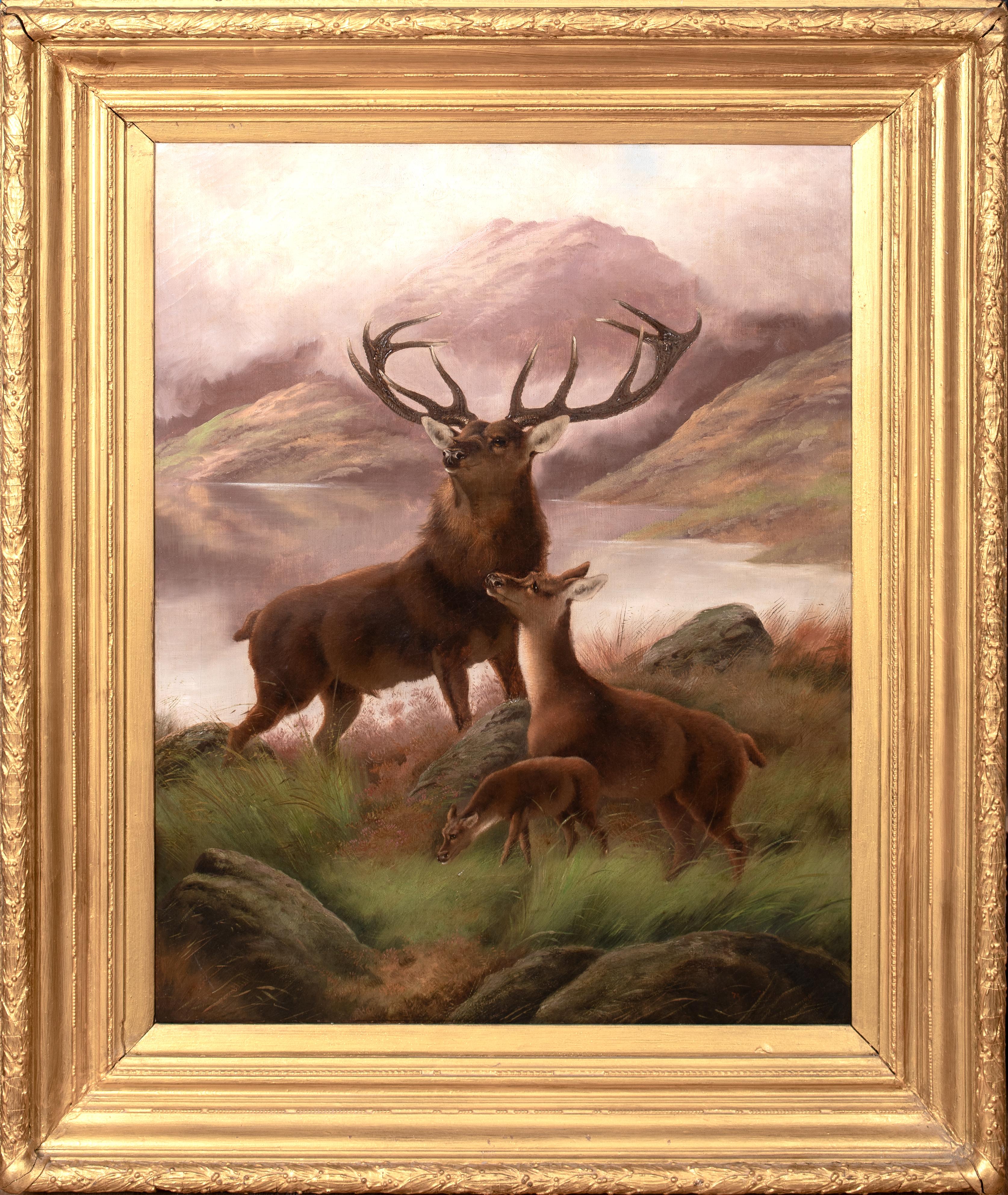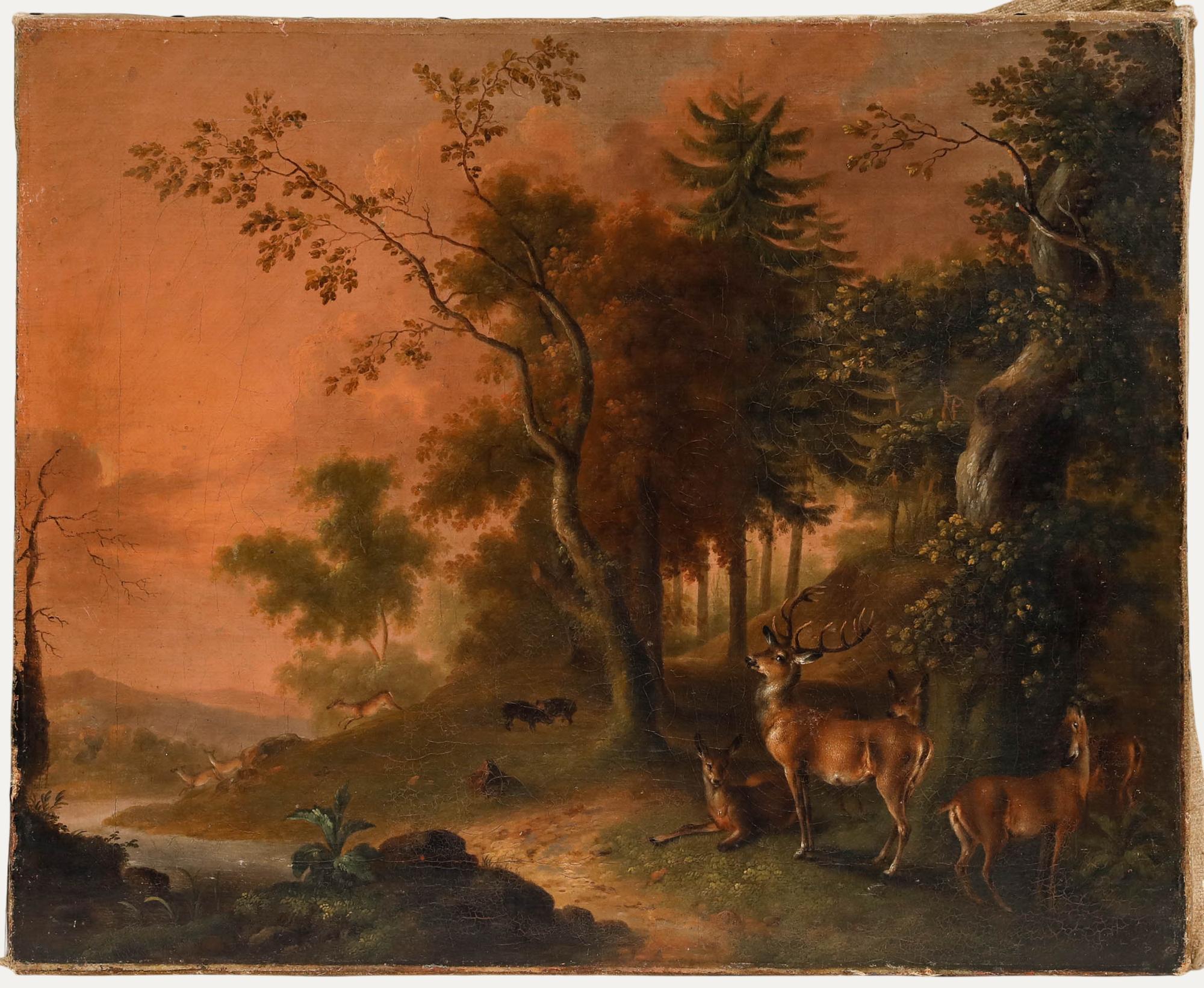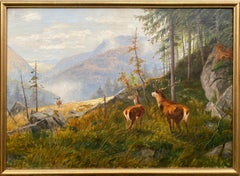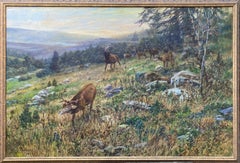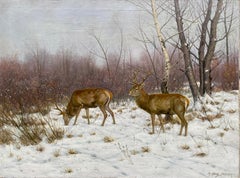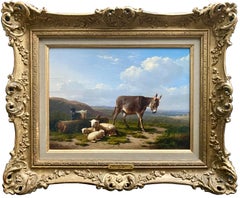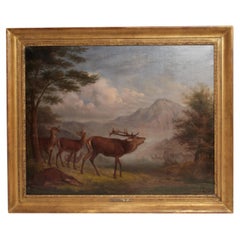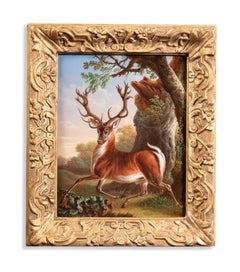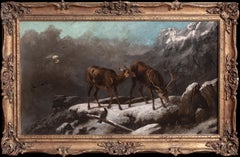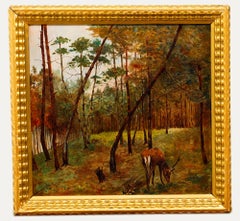Items Similar to Roaring Deer Stag, Carl Friedrich Deiker, Wetzlar 1836 – 1892 Düsseldorf, Signed
Video Loading
Want more images or videos?
Request additional images or videos from the seller
1 of 9
Carl Friedrich DeikerRoaring Deer Stag, Carl Friedrich Deiker, Wetzlar 1836 – 1892 Düsseldorf, Signed1836 – 1892
1836 – 1892
$9,761.95
£7,255.78
€8,200
CA$13,478.57
A$14,946.74
CHF 7,853.40
MX$182,623.72
NOK 98,256.76
SEK 92,230.76
DKK 62,438.90
About the Item
Roaring Deer Stag
Deiker Carl Friedrich
Wetzlar, Germany 1836 – 1892 Dusseldorf, Germany
German Painter
Signature: Signed bottom right
Medium: Oil on canvas
Dimensions: Image size 58 x 81 cm, frame size 73 x 96 cm
Biography: Deiker Carl Friedrich was born on April 3, 1836 in Wetzlar. He was a Prussian animal painter. Deiker was specialised in animal genres related to hunting and wildlife. He also illustrated magazines and books on hunting.
Carl Friedrich Deiker was the son of Friedrich Deiker, a painter and drawing teacher at the high school. His older brother, Johannes Deiker, with whom he learned to draw after their father’s death in 1843, was a painter specialising in hunting scenes.
Deiker attended the Hanau drawing Academy, where he was a pupil of the director Theodor Pélissier (1794-1863), and then studied at Johann Wilhelm Schirmer’s studio in Carlsruhe.
In 1859, in the Reinhardswald forest, he collected studies for his large hunting paintings. From 1861 he had his own studio in Karlsruhe.
From 1864, he lived in Düsseldorf and painted wild boar, deer fighting, foxes, game birds.
Deiker stands in the baroque tradition of hunting and animal painters.
The painter died in Wetzlar on March 19, 1892. Today, his paintings can be found in private and public collections, including in the Cologne Museum “Dogs Chasing their Prey”.
- Creator:Carl Friedrich Deiker (German)
- Creation Year:1836 – 1892
- Dimensions:Height: 28.75 in (73 cm)Width: 37.8 in (96 cm)Depth: 3.94 in (10 cm)
- Medium:
- Movement & Style:
- Period:
- Condition:The painting is housed in high quality frame which is in excellent condition. This work is offered in ready to hang gallery condition, having been professionally cleaned and revised.
- Gallery Location:Knokke, BE
- Reference Number:1stDibs: LU2006211866762
About the Seller
5.0
Vetted Professional Seller
Every seller passes strict standards for authenticity and reliability
Established in 1998
1stDibs seller since 2022
29 sales on 1stDibs
Typical response time: 1 to 2 days
- ShippingRetrieving quote...Shipping from: Knokke, Belgium
- Return Policy
Authenticity Guarantee
In the unlikely event there’s an issue with an item’s authenticity, contact us within 1 year for a full refund. DetailsMoney-Back Guarantee
If your item is not as described, is damaged in transit, or does not arrive, contact us within 7 days for a full refund. Details24-Hour Cancellation
You have a 24-hour grace period in which to reconsider your purchase, with no questions asked.Vetted Professional Sellers
Our world-class sellers must adhere to strict standards for service and quality, maintaining the integrity of our listings.Price-Match Guarantee
If you find that a seller listed the same item for a lower price elsewhere, we’ll match it.Trusted Global Delivery
Our best-in-class carrier network provides specialized shipping options worldwide, including custom delivery.More From This Seller
View AllDeer in a Mountain Landscape, Karl-Heinz Wenzel, 20th Century, German Painter
Located in Knokke, BE
Deer in a Mountain Landscape
Wenzel Karl-Heinz
1932 – ?
20th Century
German Painter
Signature: Signed bottom left
Medium: Oil on canvas
Dimensions: Im...
Category
20th Century Naturalistic Animal Paintings
Materials
Canvas, Oil
Schmidt Hans, Hamburg 1859 – 1950 Weimar, German Painter, Deer in a Landscape
Located in Knokke, BE
Hans Schmidt
Hamburg 1859 – 1950 Weimar
German Painter
'Deer in a Landscape'
Signature: Signed bottom left, placed Weimar and dated 1941
Medium: Oil on canvas
Dimensions: Image siz...
Category
Mid-20th Century Realist Animal Paintings
Materials
Canvas, Oil
Christian Haug, 1862 – 1953, Norwegian Painter, Oil on Canvas, Signed and Placed
Located in Knokke, BE
Haug Christian
Soleur, Norway 1862 – 1953 Munich, Germany
Norwegian Painter
Deer in a Winter Landscape
Signature: Signed bottom right and placed Mu...
Category
Early 20th Century Realist Animal Paintings
Materials
Canvas, Oil
'The Little Donkey' by Eugène Joseph Verboeckhoven (1798 – 1881), dated 1856
By Eugène Joseph Verboeckhoven
Located in Knokke, BE
Eugène Joseph Verboeckhoven
Waasten 1798 – 1881 Schaarbeek
Belgian Painter
'The Little Donkey'
Signature: signed lower left and dated 'Eugene Verboeckhoven 1856'
Medium: oil on pan...
Category
Mid-19th Century Romantic Animal Paintings
Materials
Wood Panel, Oil, Canvas
Attributed to Pierre-Jean Hellemans, Brussels 1787 – 1845, Oil on oak panel
Located in Knokke, BE
Hellemans Pierre-Jean
Brussels 1787 – 1845
Belgian Painter
A Summer Landscape
Signature: Attributed to Hellemans Pierre-Jean
Medium: Oil on oak panel
Dimensions: Image size 62 x 78 cm, frame size 72,50 x 92,50 cm
Biography: Hellemans Pierre-Jean was born on November 21, 1787, in Brussels.
He was a Belgian pre-romantic painter of landscapes.
He was married with his niece, Jeanne Marie-Joséphine Hellemans (1796-1837). She was a painter of still lifes with flowers and fruits.
Hellemans studied at the Acade...
Category
19th Century Romantic Landscape Paintings
Materials
Oil, Wood Panel
'A winter landscape with an ox-cart' by Willem De Klerk (1800 – 1876)
Located in Knokke, BE
Willem De Klerk
1800 – Dordrecht – 1876
Dutch Painter
'A winter landscape with an ox-cart on a wooded road near a village'
Signature: signed lower left ‘W. de Klerk f’
Medium: oi...
Category
Early 19th Century Romantic Landscape Paintings
Materials
Ink, Watercolor, Pencil
You May Also Like
Painting oil on canvas with wild stags. By Johann Frankenberger, Germany 1840.
Located in Milan, IT
Oil on canvas painting depicting a group of wild stags in a mountain landscape od romantic taste. Golden gilt fruitwood frame. Signed: Johann Frankenberger (Hadamar 1807 - Wien 1874), renowned painter of intense portraits...
Category
Antique Mid-19th Century Austrian Paintings
Materials
Canvas, Fruitwood
A stag in a landscape
By Charles Towne
Located in Stoke, Hampshire
Charles Towne (1763-1840)
A stag in a landscape
Signed with initials and dated 'CT 1805' lower right
Oil on panel
Painting size 10 1/2 x 8 1/2 in
Framed size 14 x 12 in
Charles Town...
Category
19th Century Old Masters Animal Paintings
Materials
Oil
Stag & Deer Grazing In The Frozen Scottish Highlands, 19th Century ROBERT ROE
Located in Blackwater, GB
Stag & Deer Grazing In The Frozen Scottish Highlands, 19th Century
by ROBERT HENRY ROE (BRITISH 1822-1905)
Large 19th Century Scottish Highland scene of a deer & Stag grazing in a ...
Category
19th Century Animal Paintings
Materials
Canvas, Oil
$2,689 Sale Price
20% Off
European Late 19th Century Oil - Stag in a Serene Woodland
Located in Corsham, GB
This late 19th century European School oil painting captures a serene woodland scene with a lone stag grazing amidst slender trees. The composition draws the viewer's eye through the...
Category
Late 19th Century Landscape Paintings
Materials
Oil
The Monarch Of The Glen, 19th Century - Sottish Highland Stag Deer & Fawn
Located in Blackwater, GB
The Monarch Of The Glen, 19th Century
School of SIR EDWIN LANDSEER (1802-1873)
Large 19th Century Scottish view of a Stag, Deer and Fawn, oil on canvas. Excellent quality and condi...
Category
19th Century Animal Paintings
Materials
Canvas, Oil
$5,489 Sale Price
20% Off
M. Prasch - 1880 Oil, Noble Deer
Located in Corsham, GB
This romantic late 19th-century landscape depicts an idyllic woodland scene bathed in warm, golden light, featuring graceful deer gathered beneath towering trees. Signed, dated and i...
Category
Late 19th Century Landscape Paintings
Materials
Oil
More Ways To Browse
Antique Hunting Paintings
Antique Stag
Animals Fighting
Framed Deer Art
Large Hunting Paintings
Deer Oil Painting
Oil Paintings Of Deer
Stag Deer
Fox Hunting Painting
Game Bird Painting
Stag Hunting
Antique Deer Painting
Stag Painting
Boar Hunting
Antique Wild Boar
German Stag
Antique Stag Painting
Painting Bird Hunting
